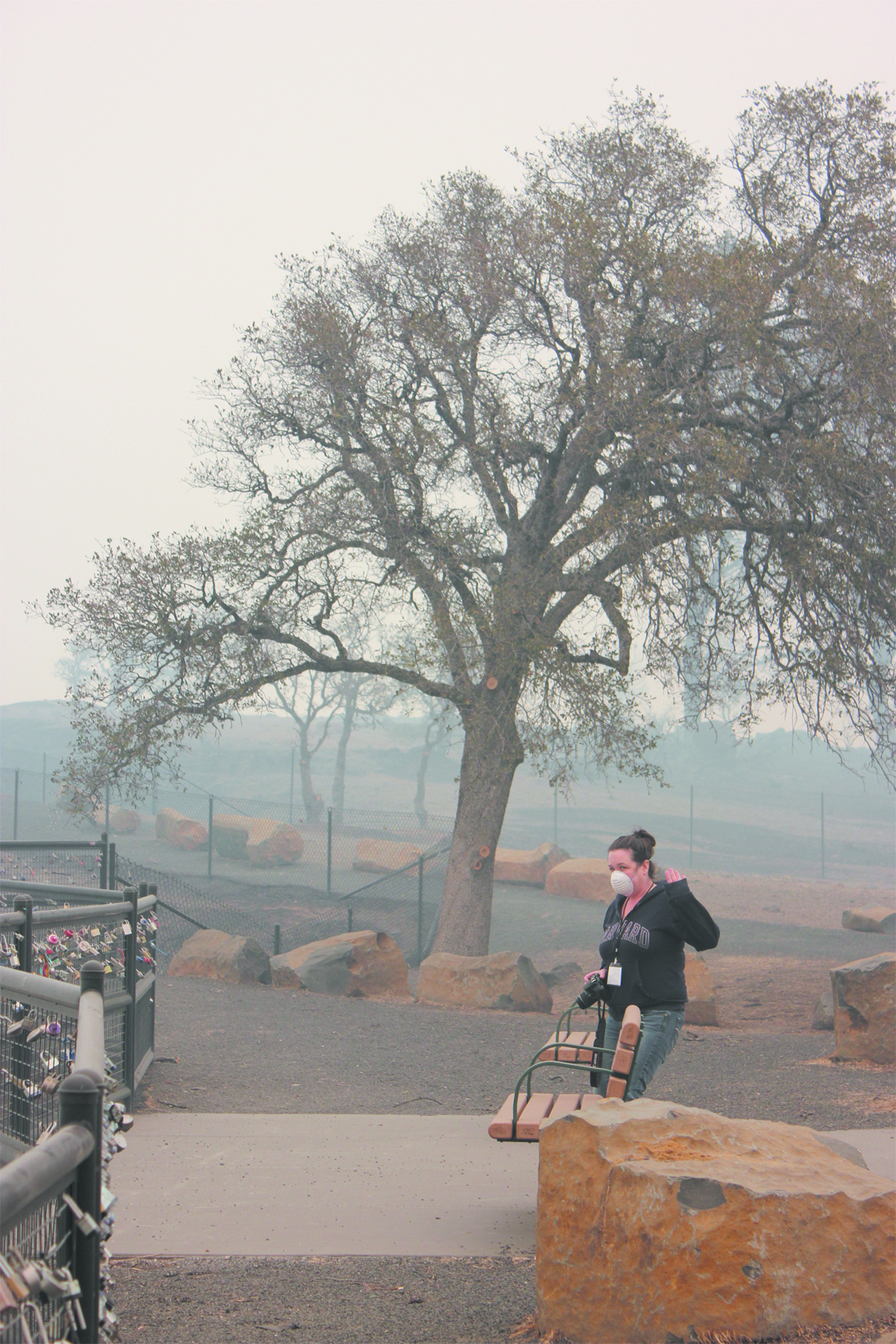
Photo by Melissa Daugherty
CN&R Managing Editor Meredith J. Cooper at Lookout Point at the tail-end of a long day in Paradise on Nov. 9.
In late 2013, my ex-husband and I moved back to Butte County after a stint abroad, settling in a large room in one of the half-dozen houses on his dad’s “hippie compound,” as I affectionally called it, off of Wagstaff Road in Paradise. It was only home for six months or so, but I’ll never forget the sound of silence amid the pines, the comfort of the wood stove on cold nights, and the slower pace of life outside the “big city.”
On Nov. 9, 2018, while driving up the Skyway mouth agape, windows down with mask pulled down, I, along with CN&R Editor Melissa Daugherty, saw a whole different Paradise. The air was a thick, smoky haze, which, combined with the utter destruction we saw all around us and the emptiness of the roads, created a scene right out of a post-apocalyptic horror film.
Except this was no movie.
Our only real agenda that first day was to survey the damage and document what we saw. I don’t remember a lot of specifics—my memories from those days, like the air those first few weeks, are hazy. But a few are seared into my brain. The car in the parking lot of what once was Kalico Kitchen, its charred frame resting on the ground, the aluminum from the hub caps having burned so hot it had oozed down the pavement. The rows of abandoned vehicles along nearly every roadway. The power poles hanging like crosses from electric lines, flames still eating away at them from the bottom up.
Then we went to Wagstaff. Addresses were hard to find, but strangely the small but colorful flag that marked my former in-laws’ driveway was still there, proof that what I was looking at before me was, indeed, the still-smoldering remains of that old hippie compound.
I returned to Chico that night and wept. The tears flowed daily for months. I mostly held it together for interviews, forcing myself to be strong. But I often found myself quietly sobbing at my desk, or in the bathroom at work. And every night when I got home, finally able to shed the day’s distress. Oliver, my trusty Boston terrier, licked a lot of tears last year.
I texted my ex-sister-in-law to ensure everyone had made it out—the number of missing at that time was staggering. They had. I told her what I’d seen, and I sent her pictures. They’d figured it had all burned, she said, but knowing for sure gave them some closure.
Over the next few weeks, I returned to Paradise—and Magalia, Yankee Hill, Concow, Butte Creek Canyon. Many of my trips were missions to check on friends’ homes. Driving through the neighborhoods allowed me to see things I wouldn’t have by sticking to the main routes. A flock of wild turkeys on South Park Drive in lower Magalia; the lone standing homes amid seas of rubble and ash.
I’ve written countless Camp Fire-related stories over the past year, and it’s been simultaneously some of the most rewarding work I’ve done in my roughly 13 years at the CN&R and the most emotionally challenging. From covering the vital issue of water contamination to interviewing folks giving of their own meager means to ensure their fellow survivors have food to eat and warm clothes in the winter, this coverage touches my heart in a way few other stories ever have.
I don’t cry daily anymore, but I do still break down occasionally. I know I’m not alone. But as journalists, and entrenched members of this community, we march on, our collective drive to do our part for our neighbors unwavering, perhaps even stronger than ever.
